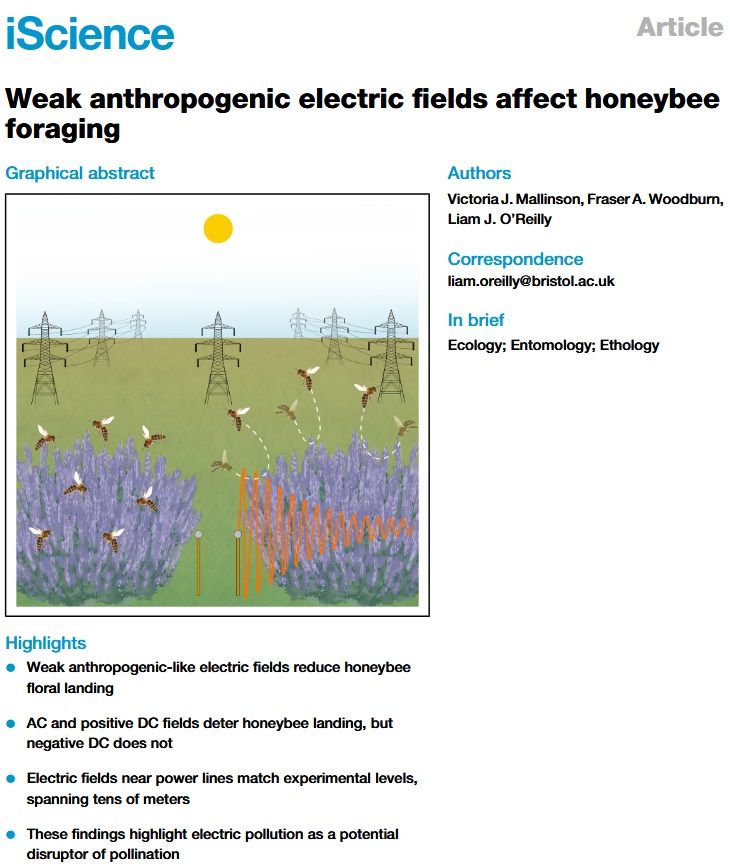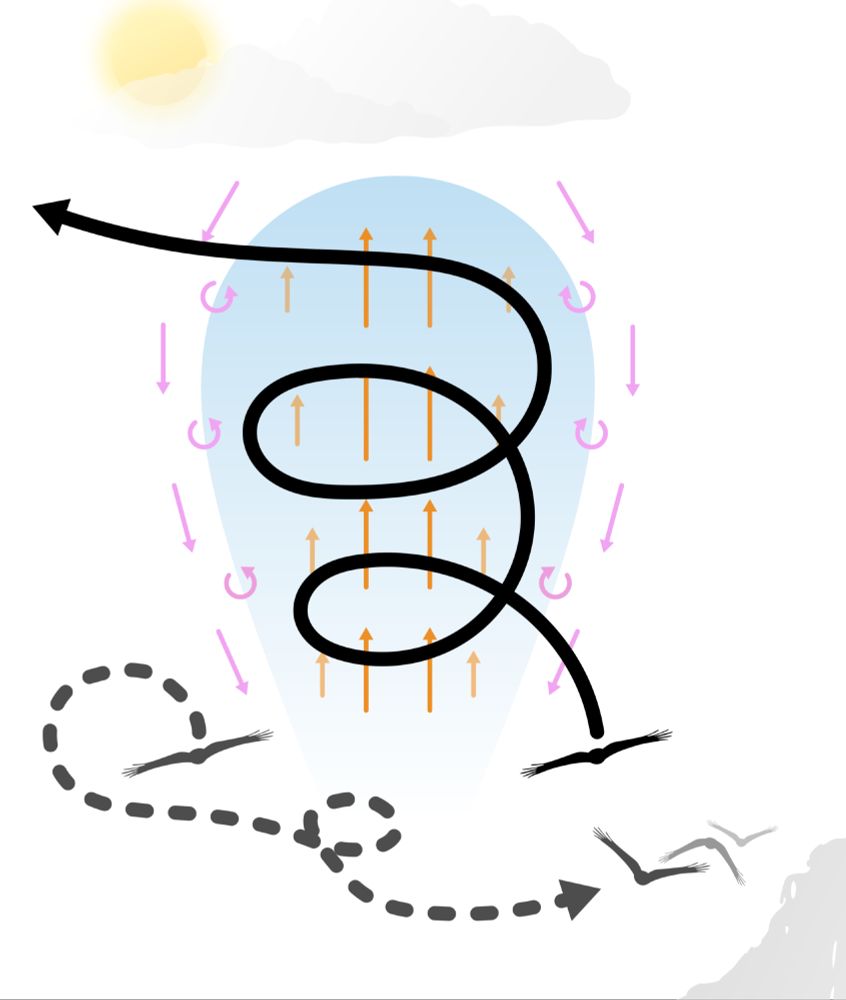
The sensory ecology of caterpillars - Journal of Comparative Physiology A
Caterpillars (larval Lepidoptera) are one of the most ecologically and evolutionarily significant taxa on Earth. As both feeders and food, they shape the dynamics of enumerate ecosystems on land. Key ...
Do you work (/want to work) with caterpillars? Or sensory systems? Or BOTH?! Well good golly do we have the paper for you! We explain the senses that caterpillars have, what they use them for, and how anthropogenic sensory pollution might be messing it all up 🐛 doi.org/10.1007/s003...
10.11.2025 15:24 — 👍 40 🔁 25 💬 2 📌 1

From preferences to pollination: do hummingbirds and bees differ in how they choose flowers?
#PhD position!
Comparing #foraging and #cognition in #hummingbirds and #bumblebees
Fieldwork in the Canadian Rockies, lab experiments at @newcastleuni.bsky.social, and ecological modelling at @uniofstandrews.bsky.social
Details (including my email) here: iapetus.ac.uk/studentships...
09.11.2025 14:14 — 👍 18 🔁 21 💬 0 📌 0

Perception of aerodynamical looming stimuli
Clémençon et al. show that predator size and velocity are two key parameters for the
perception of the aerodynamical signature of approaching predators (aerodynamical
looming stimuli). They report tha...
How do animals recognise incoming stimuli as predators? In this paper from the Casas' lab, they tested aerodynamical looming, and they show that size and velocity of the incoming object activated wind-sensitive neurons in 🦗. These responses are similar to visual looming! www.cell.com/current-biol...
06.11.2025 13:14 — 👍 9 🔁 2 💬 0 📌 0
Sensory receptor expansion and neural accommodation in butterfly color vision https://www.biorxiv.org/content/10.1101/2025.10.30.685642v1
31.10.2025 23:30 — 👍 4 🔁 3 💬 0 📌 1

At the edge of darkness: A framework for the evolution of visual systems in dim light
Read the free Plain Language Summary for this article on the Journal blog.
I've unlocked a new science badge!! 🎉🛡️🎉
This thoughtful piece by @meganlinnay.bsky.social expands beautifully on a short review I wrote, citing 'the Sumner-Rooney cost-benefit model' of eye loss 🥲 honoured!
For anyone interested in evolution in low light, have a read! 👉 doi.org/10.1111/1365...
30.10.2025 14:40 — 👍 19 🔁 6 💬 1 📌 0
Coral reef spiders…. Underwater?! 😱
30.10.2025 18:29 — 👍 1 🔁 0 💬 1 📌 0

PNAS Science Sessions – Webs and Leaps: Hunting adaptations of spiders. Available on all podcast platforms, subscribe and listen now!
Spiders are precision hunters, not just creepy crawlies. 🕷️ This PNAS Science Sessions episode dives into cutting-edge research on spider webs that hear, silk-powered lifts, and REM sleep-like states in jumping spiders. Tune into this Halloween Special: https://ow.ly/W5NO50XhCZ7
25.10.2025 15:00 — 👍 20 🔁 8 💬 1 📌 0
🧠🌟🐭 Excited to share some of my postdoc work on the evolution of dexterity!
We compared deer mice evolved in forest vs prairie habitats. We found that forest mice have:
(1) more corticospinal neurons (CSNs)
(2) better hand dexterity
(3) more dexterous climbing, which is linked to CSN number🧵
22.10.2025 20:41 — 👍 357 🔁 116 💬 18 📌 25

We had a rather unexpected presenter at our lab meeting this morning 😄🪲🎓
22.10.2025 09:26 — 👍 14 🔁 3 💬 1 📌 0
As someone who still manually writes references (🫣), are there any recommendations for easy to use citation managers? I've had some trouble with EndNote and importing relatively older PDFs
20.10.2025 10:47 — 👍 1 🔁 0 💬 3 📌 0
Reposting for the Monday morning scrollers! Funded PhD opportunity with me @multipleye-lab.bsky.social @bristolbiosci.bsky.social - spiders, their eyes, and their babies under long- and short-term light pollution!
20.10.2025 07:37 — 👍 16 🔁 21 💬 0 📌 0
This is so exciting!!! Looking forward to seeing new development (heh) in the spider eye field 🕷️👁️
18.10.2025 13:48 — 👍 1 🔁 0 💬 0 📌 0
Scanning and active sampling behaviours emerge from conserved insect neural circuits https://www.biorxiv.org/content/10.1101/2025.10.13.682010v1
14.10.2025 20:45 — 👍 3 🔁 2 💬 0 📌 0

Octopus track chemosensory plumes to find food
journals.plos.org/plosone/arti...
11.10.2025 17:44 — 👍 40 🔁 8 💬 1 📌 0

The first preprint from my PhD work is out! We used C. elegans to define and manipulate heterogeneous groups, exploring how individuals with different behavioural phenotypes interact and shape collective behavior. Check it out here: www.biorxiv.org/content/10.1...
10.10.2025 09:13 — 👍 13 🔁 6 💬 1 📌 0
What a lovely 'spotlight' of @talboger.bsky.social's work on style perception! Written by @aennebrielmann.bsky.social in @cp-trendscognsci.bsky.social.
See Aenne's paper below, as well as Tal's original work here: www.nature.com/articles/s41...
08.10.2025 17:27 — 👍 29 🔁 4 💬 0 📌 0

Golden eagle on the nest in Finland (by O. Karlin)
🦅PhD position 🦅 in my new group at @fbm-unil.bsky.social in Switzerland, studying how the social and resource landscapes shape the learning process for soaring flight. Deadline: Oct 30. Pls repost! career5.successfactors.eu/career?caree...
06.10.2025 05:56 — 👍 108 🔁 80 💬 1 📌 2
This is why we fund scientists to study things like oyster slobber even if you don’t think it sounds important
30.09.2025 22:34 — 👍 17023 🔁 6424 💬 165 📌 96

🐝 Can #ElectricFields from #powerlines disrupt #honeybee foraging? A new #iScience study says yes — AC & +DC fields cut landings by 71% 🌸⚡
🧾Read here: www.cell.com/iscience/ful...
#ElectricPollution #PollinatorHealth #Entomology #Agroecology #EcoResearch #InsectScience #SaveTheBees #FieldEcology
26.05.2025 14:14 — 👍 6 🔁 3 💬 0 📌 0

Most people are right- some left-handed or ambidextrous - and so are honey buzzards when turning in thermals! But, unlike us, mastering flight means these birds must overcome laterality as they grow. A gem of a preprint led by @enourani.bsky.social. www.biorxiv.org/content/10.1...
26.09.2025 12:36 — 👍 9 🔁 5 💬 0 📌 0
Overcoming Innate Lateralization Improves Avian Flight Performance https://www.biorxiv.org/content/10.1101/2025.09.24.678238v1
25.09.2025 10:45 — 👍 1 🔁 1 💬 0 📌 0

Congratulations to Anna Stöckl receiving the prestigious Walther-Arndt award from the German Zoological Society. #dzg2025 @anna-stoeckl.bsky.social 🥳🥂
11.09.2025 17:34 — 👍 27 🔁 3 💬 1 📌 3
Lecturer in Psychology at Newcastle University
Studying how animals acquire and use information to do useful things. Navigation, foraging, and comparative cognition. 🐦⬛
All opinions are my own. He/him. OCD & ADHD
Behavioural ecologist interested in the social life of animals. Postdoc at the Universities of Bristol and Zurich. Soon returning to Germany to start a DFG-funded Emmy Noether group. Associate Editor in ProcB. My own views.
Proud dad, Professor of Computational Cognitive Neuroscience, author of The Decoding Toolbox, founder of http://things-initiative.org
our lab 👉 https://hebartlab.com
Asst. prof at UBC 🌿cat enthusiast, 🏳️🌈 in STEM - species coexistence x evolutionary ecology research
A team of scientists at the Max-Planck Institute of Animal Behavior studying how animals move in and thus negotiate their natural world. You can find more information here: https://www.ab.mpg.de/safi
Research group at the University of Bonn studying sleep, life history, evolutionary ecology and behavior (sleeb)- mainly using spiders 🕷️
We love natural history, scicom & adventures and are here to share that with you!
www.danielaroessler.weebly.com 🌈
PhD researcher at St Andrews' Centre for Biological Diversity and the Scottish Oceans Institute. Sensory ecology - animal (multi)sensory processing - intertidal - social foraging.
🦀🌊🐟🫧
EastBio Student/EDI Rep
(she/her)🌈🍉🌱
Fascinated by the evolution of the brain | Senior Research Associate at EBaB lab (University of Bristol) | 2025 PI Fellow (Company of Biologists) | Section Speaker Neurobiology DZG | he/him
https://linktr.ee/max.farnworth
Lecturer in Evolutionary Biology @BristolUni
Evolution of early branching animals
neuroscience and behavior in parrots and songbirds
Simons junior fellow and post-doc at NYU Langone studying vocal communication, PhD MIT brain and cognitive sciences
Reader in Computer Vision and Machine Learning @ School of Informatics, University of Edinburgh.
https://homepages.inf.ed.ac.uk/omacaod
Research and development company leveraging the biology of diverse organisms. Read about our science: http://research.arcadiascience.com
Neuroscientist, fly walker, postdoc @Uni of Bristol. 🇮🇹➡️🇬🇧🌈
Thinking about the brain, spinal cord and how we move (and related neurotechnology). Into books, music, coffee, food, photography+art, animals & some humans. Now group leader at Champalimaud Research
#neuroskyence #Sensorimotor #compneurosky #Science
Oxford's UKRI AI Centre for Doctoral Training in AI for the Environment.
Intelligent Earth brings together academics across Oxford to train a new generation of PhD students to tackle some of the most pressing environmental issues using AI.
DPhil student @intelligentearth.bsky.social & Oxford biology graduate.
Machine learning, biodiversity, sensory ecology, biologgers, birds
Marine biology, ctenophores, bioluminescence, deep-sea, genomics, computing for biologists.
The Radiant Sea. Photo book.
Cello? Views my own.
bit.ly/arms-deep bit.ly/radsea
Insect neurobiologist who ❤️ flies, fungi, fiber, and fbooks. Campaniform nut. Assistant prof @VTNeuro
Assistant professor, Department of Ecology and Evolution, University of Lausanne.
Interested in how behaviors are learned during early life, in the context of the environment 🪺🦅
Animal Cognition Research Group leader, Associate Prof. @psychualberta.bsky.social, Canada Research Chair in Cognitive Ecology (she/her) ally 🏳️⚧️🏳️🌈 @laurenguillette on X



















